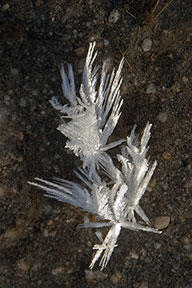
Frost flowers (aka, ice flowers) seen five years ago at this time of year.
I last saw frost flowers bloom along the shore of Kootenay Lake five years ago. Since then, watching for these delights has been rather like searching for a rarely blooming wild orchid.
Frost flowers bloom under a rather narrow range of conditions, live for a few hours, and are gone. Abruptly last Saturday morning, beds of frost flowers sprang up along the lakeshore.
Most types of frost result when water vapour condenses onto a cold surface and so they form a more-or-less continuous blanket (see surface hoar). Contrastingly, frost flowers result from vapour mixing just above a surface that is (relatively) warm, and they bloom as discrete blossoms.
On Saturday, the air temperature was about -6C, but near the shore, portions of the beach were wet from sun-warmed seepage. Such conditions will produce steam fog if the humidity is high enough. However, ice crystals can form at a lower humidity than that needed for water drops, and on Saturday, there were only frost flowers.
The sparse distribution of frost flowers is reminiscent of wild flowers in a meadow. While, normal frost blankets a cold surface, frost flowers are discrete blossoms on a (relatively) warm surface.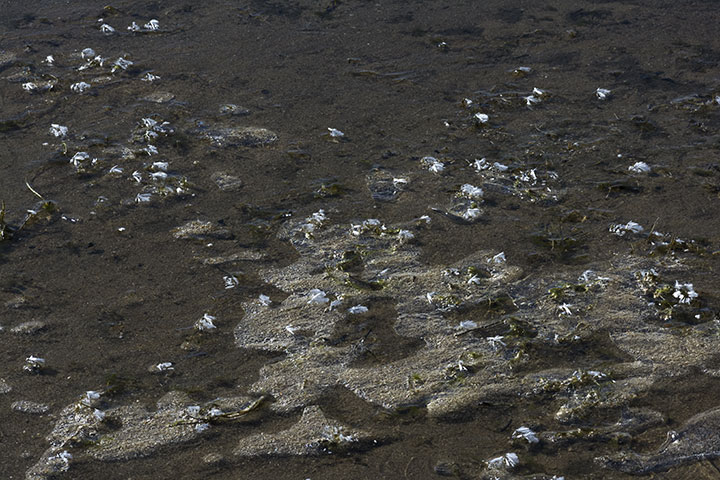
Some botanical flowers are heliotropic: they face the Sun. Frost flowers are anemotropic: they face into the flow of air—or more to the point, the flow of vapour. These frost flowers point upslope (away from the Lake) and into a barely detectible katabatic drift of air (flowing towards the Lake) bringing the vapour that feeds flower growth.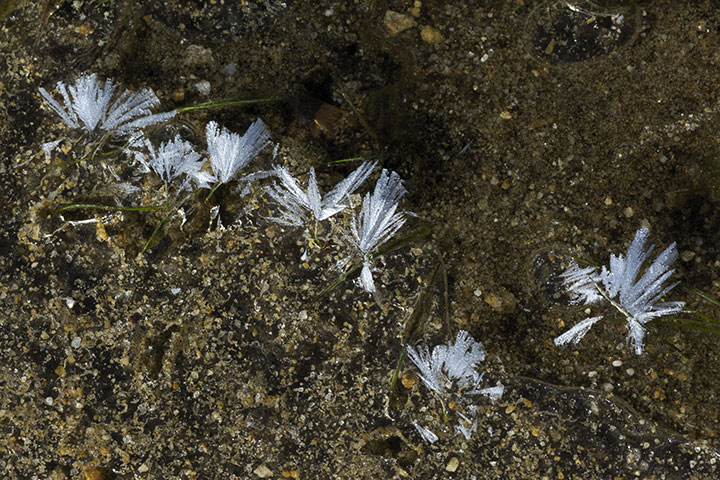
Regular frost covers the surface with a blanket of crystals because the condensation is directly onto that surface. Frost flowers form slightly above a warm moist surface in a thin layer where warm and cold vapour mix. The frost must form onto objects that stick up into that layer and in this picture, those objects seem to be tiny twigs.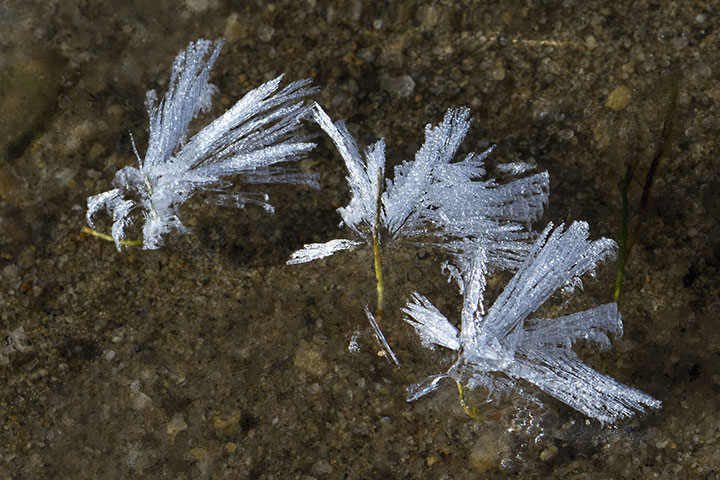
This sinuous flower formed along what seems to be a stolon. 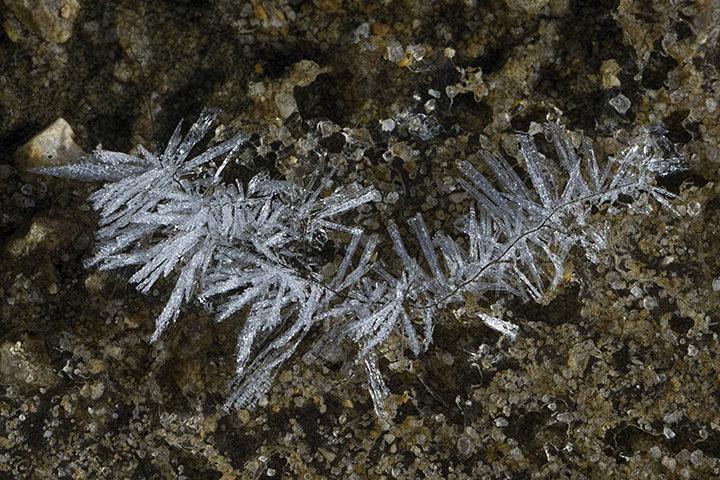
Will it take another five years before the frost flowers of Kootenay Lake bloom again?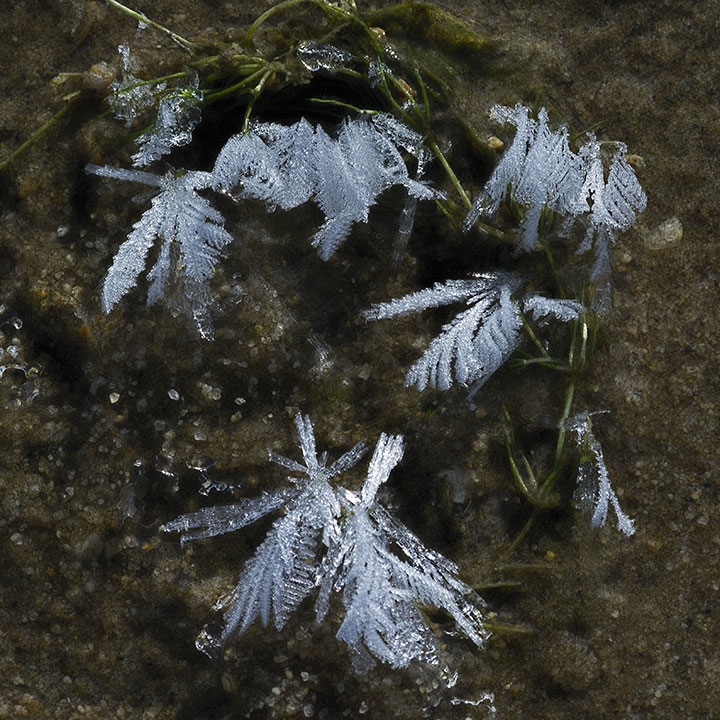

Very beautiful, Alistair.
Fascinating observation, scholarly explanation, and superb photography of a rather tricky subject!
In summer think a lot about anabatic and katabatic air flow – at night when we sleep in our open cabin the air flows through and cools us down on a hot summer evening. Now I can relate, in winter, to ice flowers and the effect of air currents and temperature. On occasion we get these ice flowers forming on our metal farm gate. Truly “rare as orchids.”
I am learning so much from your posts.
Such a wonderful and interesting post! I first heard of these frost flowers only a month ago and have never seen any. Now that I know what to look for, I will be checking our beach a little more frequently!